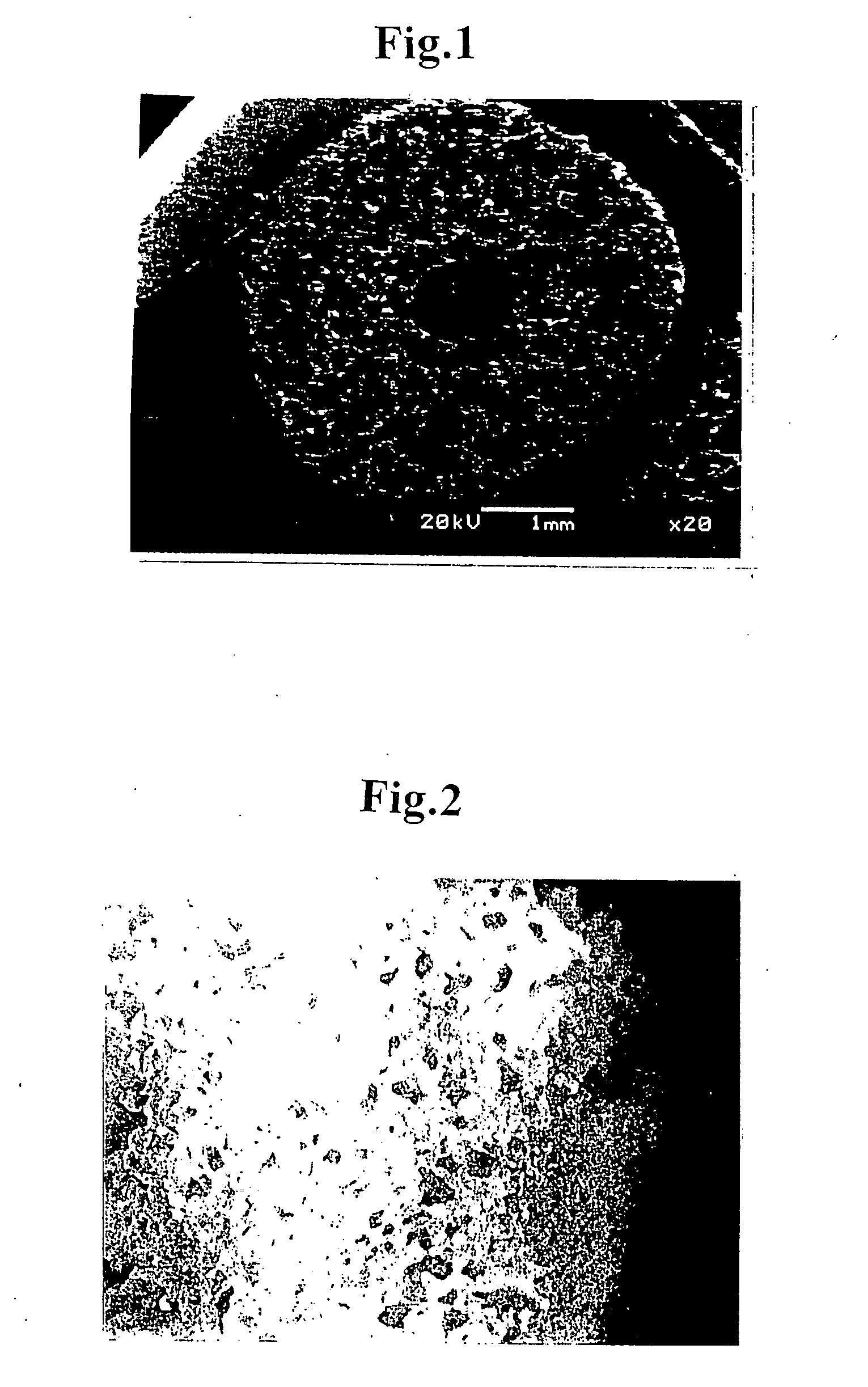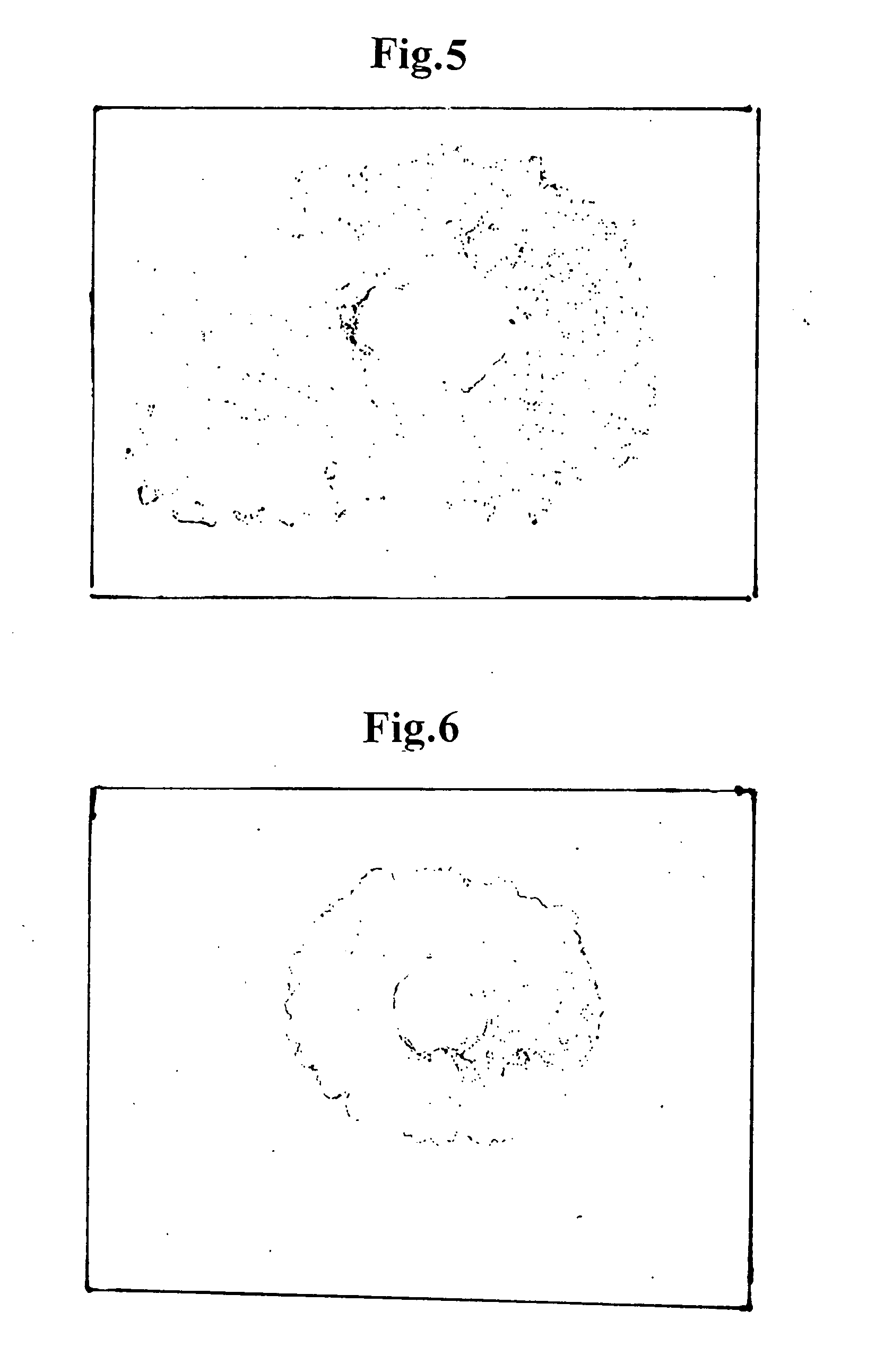Scaffold for tissue engineering, artificial blood vessel, cuff, and biological implant covering member
a biological implant and tissue engineering technology, applied in the field of tissue engineering scaffolds, can solve the problems of inability to adjust the distribution of engraftments, inability to obtain uniform cell engraftments on the whole surface, and inability to meet the requirements of scaffolds comprising appropriate three-dimensional network structures, etc., to achieve the effect of reducing the foreign-body reaction
- Summary
- Abstract
- Description
- Claims
- Application Information
AI Technical Summary
Benefits of technology
Problems solved by technology
Method used
Image
Examples
example 1
[0071] A thermoplastic polyurethane resin (MIRACTRAN E980PNAT available from Nippon Miractran Co., Ltd.) was dissolved into N-methyl-2-pyrrolidinone (reagent for peptide synthesis, NMP available from Kanto Kagaku) by using a dissolver (about 2000 rpm) at room temperature to obtain 5.0% solution (weight / weight). 1.0 kg of this NMP solution was measured and entered into a planetary mixer (PLM-2 type, capacity 2.0 liters, available from Inoue Mfg., Inc.) and was mixed with methylcellulose (reagent, 25 cp grade, available from Kanto Kagaku) of an amount corresponding to the amount of polyurethane resin at a temperature of 40° C. for 20 minutes. With the agitation being continued, the defoaming was conducted by reducing the pressure to 20 mmHg (2.7 kPa) for 10 minutes, thereby obtaining polymer dope.
[0072] A tube forming jig was prepared which comprised cylindrical paper tube of 3.5 mmφ in inner diameter, 4.6 mmφ in outer diameter, and 60 mm in length made of a chemical experimental pap...
example 2
[0079] DMEM (culture component) solution (containing FCS (cow embryo blood serum) 10%) of smooth muscle cells from cow's blood vessel (cell density: 6×106 cells / mL) and collagen type I solution (0.3% acid solution available from Koken Co., Ltd.) are mixed in equivalent quantities while being cooled on ice, thereby preparing suspension solution of smooth muscle cells (cell density: 3×106 cells / mL).
[0080] The scaffold of tubular porous three-dimensional network structure (inner diameter: 1.2 mmφ, outer diameter: 3.2 mmφ, length: 2 cm) prepared in Example 1 was clamped at its one end and the suspension solution of smooth muscle cells (1 mL) was injected at the other end into the scaffold until leaking out through a side wall of the tubular structure. All of the injection operation was conducted on ice. By repeating the injection operation several times, the collagen solution containing smooth muscle cells well penetrated all over the tubular structure including the inside thereof. Aft...
example 3
[0082] The scaffold of tubular porous three-dimensional network structure (inner diameter: 1.2 mmφ, outer diameter: 3.2 mmφ, length: 2 cm) prepared in Example 1 was clamped at its one end and the collagen type I solution (0.15 wt. %) was injected at the other end into the scaffold until the collagen solution penetrated all over the scaffold including the inside thereof. After that, the clamping was cancelled, a mandrel of 1.2 mmφ made of SUS440 was inserted into the tubular body of the scaffold at the center thereof, and the tubular structure of the scaffold was held inside an incubator at a temperature of 37° C. to make the collagen solution to gel, thereby obtaining a tubular body of which network structure was filled with collagen gel.
[0083] A piece of about 3 cm was exfoliated from aorta abdominalis of a rat and was clamped at its both ends to block the blood stream. After that, a middle portion of the aorta was cut. The tubular body was inserted between the cut ends of the aor...
PUM
 Login to View More
Login to View More Abstract
Description
Claims
Application Information
 Login to View More
Login to View More - R&D
- Intellectual Property
- Life Sciences
- Materials
- Tech Scout
- Unparalleled Data Quality
- Higher Quality Content
- 60% Fewer Hallucinations
Browse by: Latest US Patents, China's latest patents, Technical Efficacy Thesaurus, Application Domain, Technology Topic, Popular Technical Reports.
© 2025 PatSnap. All rights reserved.Legal|Privacy policy|Modern Slavery Act Transparency Statement|Sitemap|About US| Contact US: help@patsnap.com



